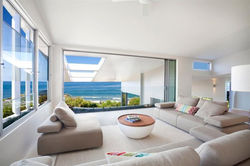top of page
WAKAD
Pune is no longer the small city whose only claim to fame was its proximity to the country’s financial capital, whose real estate market survived on rural demand emerging from the hinterlands of Maharashtra. Today, the perfect blend of its manufacturing and services sectors make Pune a standalone economic powerhouse in all respects, with a rate of job generation that is hard to match.
The snide ‘Mumbai’s sidekick city’ tag has long since lost its validity - Pune now houses large corporates that have no linkages to Mumbai whatsoever. While Pune is a preferred retirement destination, the youthful element that drives the city is hard to miss. Pune’s emergence from the shadows of its heavyweight neighbor happened because of the almost orchestrated growth of its IT/ITeS, automobile and manufacturing industries.
Factoring in that Pune saw approximately 4.7 million sq. ft. of Grade A office space leased in 2013, and using the rule of thumb that every 100 square feet result in one generated job, Pune generating 47,000 jobs or more in 2013.The compounded annual growth rate of job creation over the last five years has been in double digits.
Commercial office space leasing in Pune currently accounts for over 17.40% of the total market share in India. The generation of 47,000 jobs in 2013 was not an exceptional occurrence. Even in 2010 – nobody’s candidate for ‘Boom Year of the Decade’ - Pune witnessed very healthy commercial office leasing trend.
Apart from the service industry, Pune has cornered a massive share of the manufacturing pie. Chakan in the Pune’s Pimpri-Chinchwad region has emerged as the most desired destination, closely followed by areas like Ranjangaon, Jejuri, Shirwal, Khed and Kurkumb.
Any residential project launched with maximum price tags of Rs 1.5 cr over the last 30 months has very limited shelf life. In Pune, the demand for apartments priced between Rs 50 lakh to Rs 1.5 cr is extremely robust.
In terms of geographical mapping of its important residential corridors, Pune can be classified into East and West Pune. East Pune can be further classified into two sub-segments:
1) Magarpatta-Hadapsar Belt: The commercial office supply in this segment has no stock to spare for leasing, indicating a very bullish trend. The demand for residential spaces in this specific micro-market is tremendous.
2) Nagar Road-Viman Nagar-Kalyani Nagar-Kharadi-Yerwada Belt: This belt is once again defined by extremely robust demand for commercial office space, underscoring the bullishness for residential developments there. Specific pockets in this belt have notable for homebuyers.
The West Pune residential corridor is fundamentally defined by the Baner-Balewadi-Wakad-Hinjewadi-Sus belt. This belt is driven by large international snapping up huge spaces for setting up offices and expanding their existing facilities. West Pune will see considerable growth in the coming months, with the residential supply mix including an interesting share of townships and gated communities, which are rapidly becoming destinations in and by themselves.
hom2hom
bottom of page















